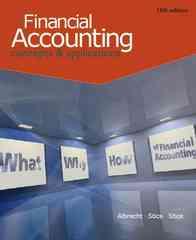Question
Company A is a high-end ceiling fan manufacturer established six years ago. It has one luxury fan model that is unique and has wide market
Company A is a high-end ceiling fan manufacturer established six years ago. It has one luxury fan model that is unique and has wide market acceptance. Sales Data Actual Sales Data ? Year 10 (last 2 months) Projected Sales Data ? Year 11 (first 5 months) Month Units Sold November, X6 3,000 December, X6 2,400 January, X7 3,500 February, X7 4,000 March, X7 3,500 April, X7 3,400 May, X7 4,000 Selling price is $100 per unit. All sales are on credit. Ending Inventory Raw materials: Outlined in direct materials below Work in process: No work in process inventory; all work completed on last day of quarter Finished goods: 20% of next month?s sales projection Average unit cost in Year 10: ?$64 Inventory method used: FIFO Direct Cost Data Direct Materials: Motors are purchased ready to use from an outside supplier at a cost of $14 each. Company A?s management desires to maintain a motor inventory based on 20% of next month?s projected production. Blades are produced in the plant. Each fan requires 10 blades. The material is purchased in 4 ft. x 8 ft. sheets at $24 per sheet. Fifteen blades can be cut out of each sheet. Experience has shown that, on average, the number of defective blades produced by the cutting process is equal to 6% of the number of good blades. Defective blades must be discarded. In case of machine breakdowns, management desires an ending inventory of finished blades each month equal to 10% of the next month?s projection of total blades for production. Direct Labor: Total payroll expense including benefits is $63 per hour for the production workers required to operate the blade-cutting machine and $63 per hour for the workers required to staff the assembly/packing workstation. The standard labor allowance is 0.2 hours per fan on the blade-cutting machine and 0.2 hours per fan at the assembly/packing workstation. Overhead: Variable manufacturing overhead and fixed overhead items are presented below. Accounts Receivable All sales are made on credit. Historically, 26% of receivables have been collected during the month of sale, 50% collected in the month following the sale, and 20% collected two months after the sale. The company has experienced a 4% bad debt on its credit sales. Accounts Payable All materials are purchased on credit. Normally one half of the purchases are paid during the month in which they were purchased and one half paid the following month. The accounts payable balance shown on the Year 10 balance sheet represents one half of the December purchases. The company does not receive any purchase discounts from its suppliers. Indirect Labor Costs Company Sales Representatives 3% commission on sales each month Sales Manager $5,000/mo. plus 50% override on sales commission Production Supervisor $4,000/mo. Administrative Expenses (salaries) $8,000/mo. Other Expenses Yearly Insurance Premiums $36,000 on October 1; 80% related to factory operations Factory Utilities January ? $15,000; February ? $17,000; March ? $15,200 Usage estimated at 90% factory and 10% administrative Advertising Expenses 7% of monthly sales Factory Building Mortgage (20 years at 8%) Building purchased four years ago for $430,000 (total cost) Down payment of $190,000 Mortgage paid at the end of each quarter Travel Expenses 4% of monthly sales Factory Maintenance 10% of monthly blade material costs Factory Janitor Services $3,000/mo. Cash Control The cash on hand at the beginning of each month must be maintained at $60,000 for any contingencies that might arise. If the operations do not provide this balance, the company will use its preapproved line of credit at 8% and borrow sufficient funds to meet the minimum required cash balance. When there is a credit line balance due, it will be paid in the next month that generates a projected cash balance over the $60,000 minimum. Depreciable Assets The factory building was purchased on January 1, Year 3. It is being depreciated using straight line depreciation for 20 years. Salvage value of the building is estimated at $70,000. The blade-cutting machine was purchased on December 31, Year 10, for $240,000 cash. It is being depreciated over eight years using the double declining balance method. Depreciation is recognized on long-term assets at the end of each quarter. Dividend Policy The company declares $58,000 annual dividend to its shareholders in the first month of the quarter. Dividends are paid in the second month of the quarter. Task: A. Using the attached ?Accounting Forms Template? and the information provided in the attached given, complete the following accounting forms for the first three months of Year 11: 1. Selling and administrative budget 2. Accounts receivable receipt schedule 3. Accounts payable payment schedule 4. Cash budget including a schedule of borrowing and repayment of loans
Step by Step Solution
There are 3 Steps involved in it
Step: 1

Get Instant Access to Expert-Tailored Solutions
See step-by-step solutions with expert insights and AI powered tools for academic success
Step: 2

Step: 3

Ace Your Homework with AI
Get the answers you need in no time with our AI-driven, step-by-step assistance
Get Started


